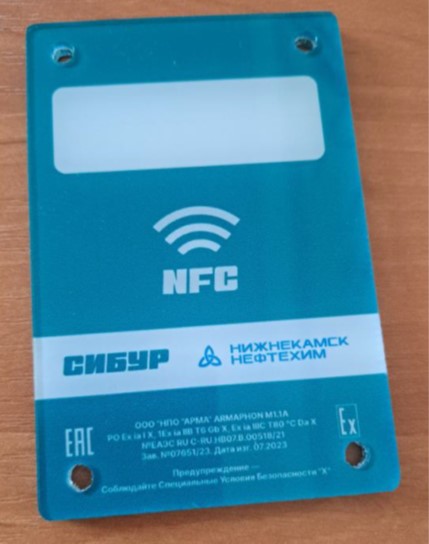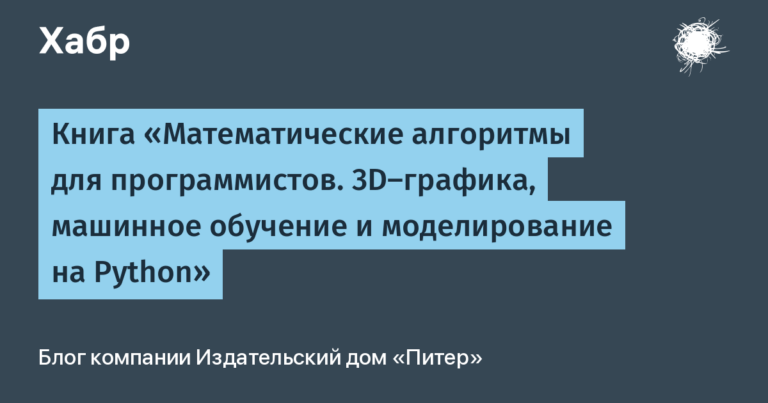NFC tags on a metal surface
Representatives of Sibur turned to the specialists of Alkor-Communication LLC (2test) as a supplier of explosion-proof mobile devices for a solution to the problem.
As one of the participants in this project, I found the experience interesting. Maybe someone will find it useful when building automation systems.
Devices whose operation we had to study
Explosion-proof smartphone SONIM XP10 (Figures 1a and 1b):
Android 12
Qualcomm SM4350 Pro, 2xA76@2.2GHz, 6xA55@1.9GHz
Display 5.5″, 2160×1080 pixels, 18:9, Gorilla Glass Victus
NFC 13.56 MHz (antenna approximately in the middle of the rear wall of the case, Figure 3)



2. Armaphon explosion-proof NFC tag (Figure 2):
Chip NTAG213
Usable capacity 144 bytes
Operating frequency 13.56 MHz
Operating temperature range -40°C to +60°C

Checking the operation of NFC tags on objects
While checking the operation of NFC tags at Sibur facilities, a pattern was discovered: all tags were secured using clamps (ties) or self-tapping screws close to the metal surface (pillars and supports).
When trying to read NFC tags with the SONIM XP10 smartphone, it did not always read the tags the first time; often, to read the tag, it was necessary to twist the smartphone in different ways and find the optimal position of the smartphone for reading.
The problem of poor reading of tags was confirmed, and the optimal place on the smartphone body was experimentally identified, approaching which the tags ensured higher reading stability.
Studying the operation of NFC tags at the stand
At the second stage, an analysis of the operation of the NFC tag in the laboratory was carried out. The mark was placed on a piece of metal pipe with a rectangular section of 60×40 mm with a wall thickness of 3 mm. During testing, an NFC tag was used, similar to those used at Sibur facilities.

During testing, the mark was moved to different distances R from the metal surface. In addition, the maximum reading distance L was additionally checked. The reading percentage was determined as the ratio of successful readings to the total number of reading attempts (at least 10).
The result of the experiment is shown in the table:
Distance between NFC tag and metal surface, R mm | Percent readings, % | Maximum distance reading, L mm |
0 | 0 | Doesn't read |
2 | 0 | Doesn't read |
4 | 0 | Doesn't read |
6 | thirty | 5 |
8 | 50 | 7 |
10 | 80 | 9 |
12 | 90 | eleven |
14 | 100 | 13 |
16 | 100 | 15 |
A little theory
There are regular NFC tags that can be placed on non-metallic surfaces and “anti-metallic” NFC tags, that is, tags for attaching to metal.
How are they different? Since NFC tags operate on the principle of electromagnetic induction, the metal surface in the immediate vicinity of the antenna acts as a kind of “grounding” and reduces the performance of the antenna, as a result of which the signal energy is not enough to power the chip. Therefore, regular NFC tags will not work stably if they are placed behind or on metal. In such cases, it is necessary to use “anti-metal” NFC tags.
If NFC tags are intended to be installed on metal, this is indicated in the technical description of the tag.
For example, IQRFID NFC label NTAG213 (D-25mm.)
Analysis results
2TEST engineers found that the secure NFC tags used at Sibur are not intended for installation on metal. Moreover, almost all of them are installed on metal surfaces, as a result of which they cannot be read or are read poorly.
What if we look the other way?
An analysis of the technical characteristics of the smartphone and its closest analogues showed that perhaps the NFC module of the SONIM XP10 device in terms of transmitter power and receiver sensitivity is inferior to these characteristics of other secure smartphones, for example, AORO A16, HONEYWELL DOLPHIN, MIG S6, ARMA S3.3+, Conquest s29, SONIM XP8. This could also lead to poorer reading of NFC tags.
Finding a cost-effective solution
After the problem was found, it remained to find the optimal solution. At first glance, there were two obvious solutions:
Replacement of tags with “anti-metallic” ones.
Replacing smartphones with smartphones with better NFC module characteristics.
But replacing several thousand tags at Sibur facilities or purchasing new smartphones is an extremely expensive, time-consuming and complex task. In addition, finding suitable “anti-metallic” tags that would have the necessary characteristics and safety certificates was not easy.
As a result, a cost-effective solution to the problem was proposed – to ensure a gap between the used NFC tags and the metal, install a polypropylene insert of the required thickness to ensure 100% reading of the tags.
As laboratory tests have shown, the optimal distance of the tag from the metal for 100% reading is in the range of 14 mm. It was found that using polypropylene instead of an air gap had no effect on reading.
A 15 mm thick foamed polyethylene gasket was used as a “break”. Armaphon NFC tags using a pad were read just as well as a tag designed to be attached to metal.
As a result, the customer was provided with the fastest and cheapest solution to the issue – installing special inserts-spacers between the tag and the metal surface, which ensures guaranteed reading of the tags by a smartphone.
As an additional solution to make it convenient for the employee to orient the smartphone while working, the location of the NFC antenna was marked on the protective case of the smartphone: a hole was made using waterjet cutting, as shown below:

Conclusion
After experimental testing, it was found that the use of inserts led to a significant improvement in tag reading. As a result, the problem was solved.



